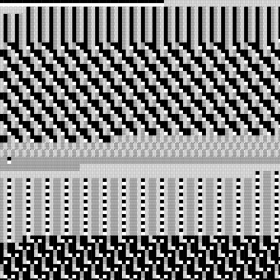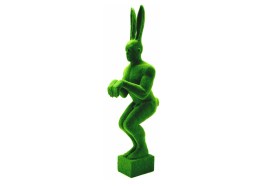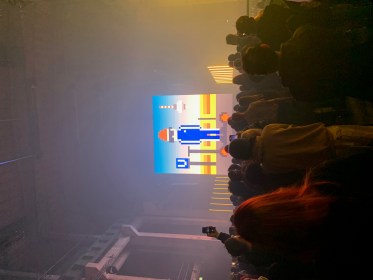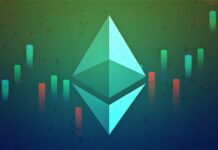Empowered by blockchain technology and cryptocurrency, NFTs (non-fungible tokens) are revolutionising the art market in Switzerland and abroad. But what is real change, and what is just sales rhetoric?
This content was published on August 8, 2022 – 09:00
Tobi Müller
It is common knowledge that the internet loves cats, and the beginning of NFTs showed just how much. In 2017, the blockchain game CryptoKitties allowed players to purchase, collect, breed and sell virtual cats using the cryptocurrency Ethereum, the second-largest digital currency after bitcoin. If you want to buy or sell digital art, including cat images, you need a certificate of authenticity which proves that the artwork is original. This digital certificate of ownership is called an NFT, an acronym that is well-established in the digital art scene.
That’s a brief overview of the short history of a complex technology. But the real question is what does NFT art look like, and has technology spoilt the aesthetics of art? A look at NFTs in Switzerland could offer some clues.
Swiss NFT artist Leander Herzog has worked with digital art, formerly known as net art, for many years. Like many NFT artists, Herzog’s background is in graphic and web design, and it shows in his art. His NFTs are colourful, abstract, minimalistic and decorative. Herzog’s art is uncluttered and clean – as one would expect from traditional Swiss design – and it meets the art lovers’ need to own a piece of art that is relaxing rather than riveting.
NFTs with plants and hybrid structures convey feelings of well-being, while other pieces seek to be funny or bawdy. But Herzog does not go there. With his graphic austerity and abstraction, he is not about creating a digital feel-good oasis.
The caption of Herzog’s Alp 1637831334 artwork reads: “minimal abstract Swiss landscape”. His Agglo series consists of animated black and white squares that are reminiscent of the early days of computer graphics. Medium and platform are futuristic, but his aesthetics are retro. This is also true for his Returngltf series which applies simple flat structures that rotate spatially. This series brings back school memories among the older generation as it looks like the colourful plastic pieces used to teach set theory in the 1970s and 1980s. The only difference is that Herzog’s colours are more attractive. His art is somehow arithmetic and seeks to integrate individual expressions into mathematical problems.
Finding potential buyers
Animated NFTs are displayed on digital frames, which is something screen producers have picked up on. They now market small digital frames like the picture frames used for family photos as well as big screens that can be mounted on the wall. This indicates that NFTs are not only geared towards nerds and classic art collectors but should also attract novices who previously had little or nothing to do with art.
Big Swiss gallerists who play an important role on the art market and meet art collectors and buyers at large fairs such as Art Basel or Art Cologne have also started to sell NFTs. New jobs like NFT advisers have emerged and specialised online magazines report solely on NFTs, for example the Swiss website artynft.io, the brainchild of three young people from Zurich. The trio reveal their first names only and publish English interviews with NFT artists. The “NFT Granny“ section guides newcomers or older generations through the intricacies of digital art and answers questions like “How do I display NFT art at home?”, “Where can I buy it?“ or “What is NFT?”
The language and topics of NFT websites like artynft.io still have a long way to go to match comparable publications or critical debates on art. But they make art more accessible to everyone, even though they can also be money-making machines. The main goal seems to be to attract potential buyers to this new kind of art and make everyone a winner.
Not yet part of the art market
For artists and gallerists who make big money with conventional art, NFTs are merely an addition to their product range, while those artists who were unknown before the big NFT hype achieve the highest prices for their digital images.
The huge advantage of the internet is that it drastically reduces production costs and enables artists with little money to join the market. Young agencies such as Metaroot in Zurich, which are known for their events and digital communication, play a big part in this new art scene where the artist’s age appears to be irrelevant. Metaroot has used the bunny sculptures of Max Grüter, a 67-year-old artist from Zurich, and turned them into NFTs. The Bunnymen collection is now on sale at opensea.io, one of the biggest NFT marketplaces in the world.
Metaroot’s witty explainer videos show that the market is still in its infancy. Despite the high sale prices, the videos do not talk about the art but about the technology used and the opportunities available. They urge viewers to jump on the bandwagon. Back in the day, this would be called a gold rush.
Similar to Leander Herzog, Max Grüter’s digital art did not just happen. For about 20 years Grüter’s 3D sculptures could be accessed through a free online library called 3D Warehouse, but today the focus is more on creating value and tapping into the market. And yet old internet values like transparency and access for all are not completely gone, which is due to the technology that makes NFTs possible in the first place.
The Holy Grail of cryptocurrencies
Nobody owns an NFT, not even if it is worth millions of dollars. Once it is sold, it can continue to circulate freely, but only those with an ownership certificate are allowed to trade it. An NFT is stored as a code on the blockchain which is the same technology used for cryptocurrencies. The blockchain puts the code into decentralised storage and saves every transaction as an encrypted file to prevent fraud. If an NFT is resold, the artist will get a share of the price. This is inscribed in the NFT and cannot be changed.
On the one hand, this may sound like digital communism because the artwork is accessible to everyone everywhere. There is no need for a museum to curate the art or charge admission and this can be intimidating to some people. There is also no obvious difference in the quality like there is between a poster in the museum shop and the original on display behind bulletproof glass. And nothing is stashed away in a safe, at least not the artwork.
On the other hand, the hype around NFTs shows traits of hyper-capitalism which aims to abolish a state’s rules and regulations. The new crypto-rich elite does not want anything to do with banks or the government.
A recent story about NFTs reveals both its libertarian and left-wing sides. In early 2021 an artist known as Beeple made almost $70 million (CHF67 million) when he sold his digital collage of about 5,000 images at the first digital-only art auction by Christie’s auction house. This put Beeple among the top three most valuable living artists. The buyer, a crypto investor himself who goes by the pseudonym Metakovan, fuelled the NFT hype by driving up the prices. Beeple’s images would never have made it in the conventional world of art; NFTs are about money and about giving the old art elite the finger.
Lost credibility
The call for participation in this market and the almost ethereal events disguise the power structures. Digital transformations may get rid of old hierarchies, but they also create new ones which can be even steeper. Some NFT artists such as Beeple have made extraordinary profits. The NFT marketplace Opensea has grown exponentially but was overtaken by Looksrare in terms of sales volume. And after NFT experienced a bumper year in 2021, the losses have been extreme in 2022, up to 50% in the first quarter alone.
The next financial crisis will not only affect so-called fiat money, legal tender cash. The value of cryptocurrencies such as bitcoin and Ethereum has dropped significantly due to interest rates hikes, investors offloading their assets and falling prices. That is nothing new. As cryptocurrencies have become part of many financial investments, the markets can no longer be clearly separated. They are interconnected and are both losing value.
If NFTs become an integral part of global investment strategies, they will lose not only their high value but also their rebellious rock’n’roll status.
NFTs and cryptocurrencies must regain the credibility they lost due to the market’s high fraud rate. Up to 80% of the NFTs displayed on Opensea are allegedly fake and are copies of famous artworks without ownership certificates. The energy consumption of the blockchains where NFTs are stored is also irresponsibly high. This is mainly due to the proof of work protocol required to regulate and verify blockchain transactions on the internet. However, the proof of stake protocol could solve the problem as under this system the NFT is not stored on the blockchain – you get a stake in it instead.
The creation of NFTs is highly carbon intensive, and a significant reduction of carbon emissions in their production could save their reputation. Otherwise, a prayer at an NFT gallery may be the best bet.
Translated from German by Billi Bierling/ts

In compliance with the JTI standards
More: SWI swissinfo.ch certified by the Journalism Trust Initiative
Credit: Source link

























 Bitcoin
Bitcoin  Ethereum
Ethereum  Tether
Tether  Solana
Solana  USDC
USDC  XRP
XRP  Lido Staked Ether
Lido Staked Ether  Dogecoin
Dogecoin  Toncoin
Toncoin  Cardano
Cardano  Shiba Inu
Shiba Inu  Avalanche
Avalanche  TRON
TRON  Wrapped Bitcoin
Wrapped Bitcoin  Polkadot
Polkadot  Bitcoin Cash
Bitcoin Cash  Chainlink
Chainlink  NEAR Protocol
NEAR Protocol  Polygon
Polygon  Internet Computer
Internet Computer  Litecoin
Litecoin  Uniswap
Uniswap  Fetch.ai
Fetch.ai  LEO Token
LEO Token  Dai
Dai  Ethereum Classic
Ethereum Classic  Hedera
Hedera  Aptos
Aptos  First Digital USD
First Digital USD  Cronos
Cronos  Stacks
Stacks  Cosmos Hub
Cosmos Hub  Pepe
Pepe  Mantle
Mantle  Filecoin
Filecoin  Immutable
Immutable  Stellar
Stellar  Render
Render  dogwifhat
dogwifhat  XT.com
XT.com  OKB
OKB  Renzo Restaked ETH
Renzo Restaked ETH  Optimism
Optimism  Bittensor
Bittensor  Arbitrum
Arbitrum  Maker
Maker  Wrapped eETH
Wrapped eETH  The Graph
The Graph 
